Rare "Union News Company" variant of the Rand McNally map of the 1893 Chicago World's Columbian Exposition.
The map provides a finely detailed treatment of the Exposition grounds, with an extensive location key.
As noted by the Newberry Library on line exhibition:
Maps of the World’s Columbian Exposition served many functions, ranging from facilitating the construction and promotion of the event to advertising specific displays, guiding tourists, and furnishing mementos. The Old Times Distillery distributed this vest-pocket map to draw visitors to their exhibit. The map features an image of the Old Times’ miniature distillery exhibit, which was tucked in an out-of-the-way location in the southeastern corner of the fairgrounds. The cardboard cover of the map describes another promotional gimmick, a contest that invited visitors to register their estimates of the number of admission tickets that would be sold during the run of the fair. The best guesser was to receive "fifteen barrels of Kentucky's famous Old Times Sour Mash Whiskey."
For this guide, Rand McNally & Co. adapted one of its generic mass-produced maps of the fair, overprinting the sheet with the promotional illustration and text supplied by Old Times. Rand, McNally dominated the market for fair maps—and Chicago mapmaking in general—through efficient production, aggressive marketing. As exemplified here, the company was a master of customizing its products to suit the needs of its clients. Many other companies exhibiting at the fair also chose versions of the "Indexed Standard Guide Map of the World's Columbian Exposition.” Rand, McNally's line of innovative, adaptable maps doubled as advertisements for the sponsoring firm and for the exposition itself, all the while leading readers to where they wanted to go.
Rarity
While the map appears in institutional collections, it is very rare on the market, this being the first example we have ever seen.
Rand McNally & Co. is a large American map and navigation company best known for its annual atlases. The company got its start in 1856, when William Rand opened a print shop in Chicago. He was joined in 1858 by a new employee, Andrew McNally. Together, the men established their namesake company in 1868. Originally, the company was intended to print the tickets and timetables for the trains running to and through Chicago; their first railway guide was published in 1869.
By 1870, they had shifted from just printing to publishing directories, travel guides, and newspapers. Their first map appeared in 1872 in a railway guide. The map was produced using a new wax engraving method, a cheaper process that gave the company an edge.
By 1880 Rand McNally had entered the education market with globes, wall maps, and geography texts for students. In 1923, Rand McNally published the first Goode’s World Atlas, named after its editor, Dr. J. Paul Goode. For generations afterward, this would be the standard classroom atlas.
In 1899, William Rand left the company, but McNally and his family remained, controlling the company for over a century. In 1904, they published their first road map intended for automobiles and by 1907 were publishing Photo-Auto Guides, which combined photography and mapping to help drivers. In 1924, they produced the Auto Chum, a precursor to their famous road atlases. Rand McNally would remain the leader in road maps and atlases throughout the twentieth century.
In 1937, Rand McNally opened its first store in New York City. Ever on the frontier of technology, Rand McNally pioneered the scribing process for printing tickets in 1958 and printed their first full-color road atlas in 1960. Arthur Robinson developed his now-famous projection of Rand McNally in 1969. By the 1980s, the company was exploring digital reproduction and digital databases of maps for truckers. In the 1990s, they lead the charge to develop trip-planning software and websites. Today, most of its products are available online or in a digital format, including maps for tablets and phones.









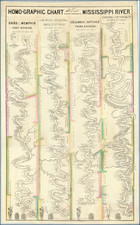
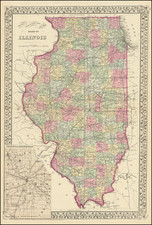
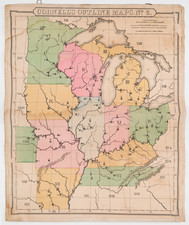
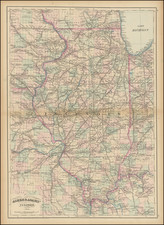
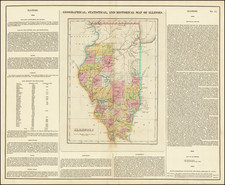
![[ Auburn Park / Chicago ] Eggleston, Mallette & Brownell's Property](https://storage.googleapis.com/raremaps/img/small/57703.jpg)